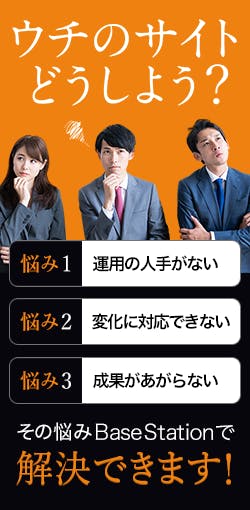Prep for Step 1: Optimize for Deliverability
Segment Your List: You need to segment your email list into different groups to ensure each group gets relevant content. You don’t want to overly sell to your customers – you want them to digest and share your content. You could have four segments labeled ‘leads’, ‘customers’, ‘win-backs’, and ‘newsletter’. Set Expectations: Setting the right expectations is important so you don’t annoy your email lists.
The expectations you should set include:
- Why they should subscribe
- How many emails will they receive
- When they will receive the emails
- What the emails will be about
- What address and brand/person the emails being sent from. Recommend that they add the address to their safe sender list.
If you set the right expectations, you will reduce the chance someone will be surprised by your email and unsubscribe from your list.
Respect Their Privacy: You must respect your subscribers’ privacy so they will stay an active subscriber. State that you will never sell their information or give their information to a third party. You might want to create a privacy policy that your subscribers can read and print. You must also honor their request to be removed from your list within 10 business days to comply with the CAN-SPAM law.
HubSpot’s email marketing and lead nurturing application includes your company name, address, and unsubscribe link in the footer of the email making CAN-SPAM compliance easy.
Step 1: Gather Your Content
Use the content you published that month as the content for the newsletter. You want to get as many people in front of your content and newsletters are one of best tactics you could use.
Step 2: Determine the Goal
You understand the overarching goal of email newsletters, but each newsletter you create and should have a primary objective. For example, do you want your customers to take a survey or read this blog article on the latest industry trends?
Make sure you place the content that is the most important at the top of the email and in a second spot in the email for maximum exposure.
Step 3: Design Newsletter
Have a consistent newsletter template throughout the year. Only change the template design once per year. Most businesses change their templates at the beginning of the New Year.
What you can change on a monthly basis are headline colors and images to ensure the newsletter doesn’t get stale. Make sure you keep your business and product brand in mind when design the email and always remember that less is more with email marketing.
White space is your friend when you design your HTML template. It helps readers find and read the content and makes calls to action stand out. Always be thinking “less is more” when you create your newsletter template.
“From” Name and Address
The “from” name and email address should be consistent. For example, the “from” name could be setup like this, “HubSpot Monthly Newsletter”. You should then match the email address with their “from” name, e.g. newsletter@hivelocity.co.jp You should not send the newsletter from an address like noreply@, sales@, marketing@, etc. These email addresses commonly get picked up by spam filters and are far less personal than a real person, and usually have lower engagement.
Plain Text
You should create a plain text version of the email for email clients that only accept plain text emails. HubSpot’s email marketing and lead nurturing applications allow you to create both an HTML and plain text version.
Step 4: Create Subject Line
There are a few options when it comes to subject lines and you should test each option to see what works best for your audience. You should have a compelling subject line for each email you send. However, put into brackets something that will allow the receipt to know that it’s your email newsletter. For example, you could say “Learn How to Become a Better Blogger [Hivelocity Newsletter]”
You could also have a generic subject that will be recognized by everyone who has received your email. This way you can set the expectation that the emails you send your list are going to have the following subject line.
Step 5: Email Body and Content
Every newsletter you create should include the following:
- Include your business social media links at the top or bottom of the email. HubSpot automatically adds your social media accounts to the bottom of your emails if you have enabled the Follow Me Module.
- Include a table of contents at the top of the email. Link each item in the table of contents to the corresponding page on your website.
- Make sure you upload the newsletter to a website page and include a link at the very top of the email that says “View in Browser.” This is very beneficial for people that don’t accept cookies
You should limit the amount of primary content to no more than five different content pieces. Examples of content you could have in your newsletter include:
Blog articles
- Whitepapers, guides, checklists,
- Case studies, video testimonials
- Special deals, coupons
- Company announcements
- Upcoming events, upcoming webinars
The content should direct people back your website and have them take some type of action. Each piece of content should have a call to action and link that sends the recipient back to your website. You should limit the amount of non -educational content in your newsletter. A good place for non educational content is in the sidebar or at the bottom of the email.
Links
You should include a link in the first one or two sentences in the newsletter. The table of contents should also be linked to the content that’s on your website. You should bold some of the links in the newsletter, which will help increase your click-through rate.
Every link in the email should be a tracking URL so you can understand how many people clicked through to your website and converted on your landing page. HubSpot’s email marketing and lead nurturing applications automatically creates a tracking URL for each link, which you can track through the Sources tool.
Images
Make sure you have less than ten images in the email to prevent the email from getting caught in a firewall or spam folder. Newsletters with fewer images have a better chance of not getting flagged as spam. Create links for all the images that are associated with a call to action, so people can click on the image and go to your website.
Each image should include a descriptive alt text phrase, so if recipients don’t accept images, the alt text will convey what the image is about.
Personalize
You could start email by adding the receipt’s first name in the email body or the subject line; you can also experiment with adding the company name in the subject line.
CAN-SPAM
By law, you must include your company name, address and an unsubscribe link in your email to comply with the CAN-SPAM law. HubSpot’s email marketing application includes this material for you.
Step 6: Email Signature/Footer
Your email signature should be consistent with the “from” name in the email. You should sign the email and include any other information you think the recipient’s may find useful.
This is a great place to add social media icons (HubSpot adds them automatically to emails), your blog URL, or announcement s for upcoming events or products.
Step 7: Testing Your Email
To ensure the best results, you should send the email to employees at your company to make sure the newsletter doesn’t get caught by their spam filters. You should have someone else proofread the email and click on every link in the email. Have them communicate back to you if there are grammar mistakes, something that confuses them, a misaligned offer, etc.
We recommend you send the email to 10% of your list to ensure everything is set up properly. Then send it to the remaining 90%. You don’t want to send an email to thousands of people that might contain broken links or missing images.
Step 8: Send the Email
Double-check all of the links in the emails and make sure both the HTML and text based version are set up properly
Step 9: Listen and Respond
The work does not end once you send them email. The other goal of email marketing is to build relationships with your list and subscribers. You need to be sure someone is responding to replies; preferably the person the email came from. Any questions or comments need to be handled in a timely manner.
Step 10: Measure
Measuring how people respond and act after you send your newsletter is very important. Things you should measure include:
- Total click throughs received
- Total clicks each link received
- Which piece of content was most popular
- Total number of unsubscribes
- Spikes in website traffic
- Spikes in social media activity
- Increase in followers on social media
Source : HubSpot
You might also want to check this blogs:
- How to Blog and Increase Your Traffic in 11 Steps
- 20 Ways to BrainStorm before to Create a New Blog
- How To Promote Your Blogs Online
- Your Business Doesnt Need a Website, What You Really Need is a Platform
- 13 Ways to Create New Content Offers for Your Persona
- 7 Step Guide to Creating a Resource Center for Your Contents
- What is the definition of Persona Online??
- 8 Steps to Create Contents & Lead Generation
- 10 Steps that will Optimize Your Landing Pages
- Create Call to Actions in 8 Steps
- 9 Awesome Steps to Create Email Marketing for Business
- 5 Best Ways to Test Your Email Contents
- 5 Steps to Get or Increase Guest Blogging
- 4 Ways to Drive Traffic in Your Landing Pages
- 10 Steps to Create Awesome Email Newsletter
- 10 Steps to Create a Monthly Inbound Marketing Report
- Content That Should Be on Your Lead Nurturing Emails
Start today to build your business with HubSpot (Inbound Marketing Software)





